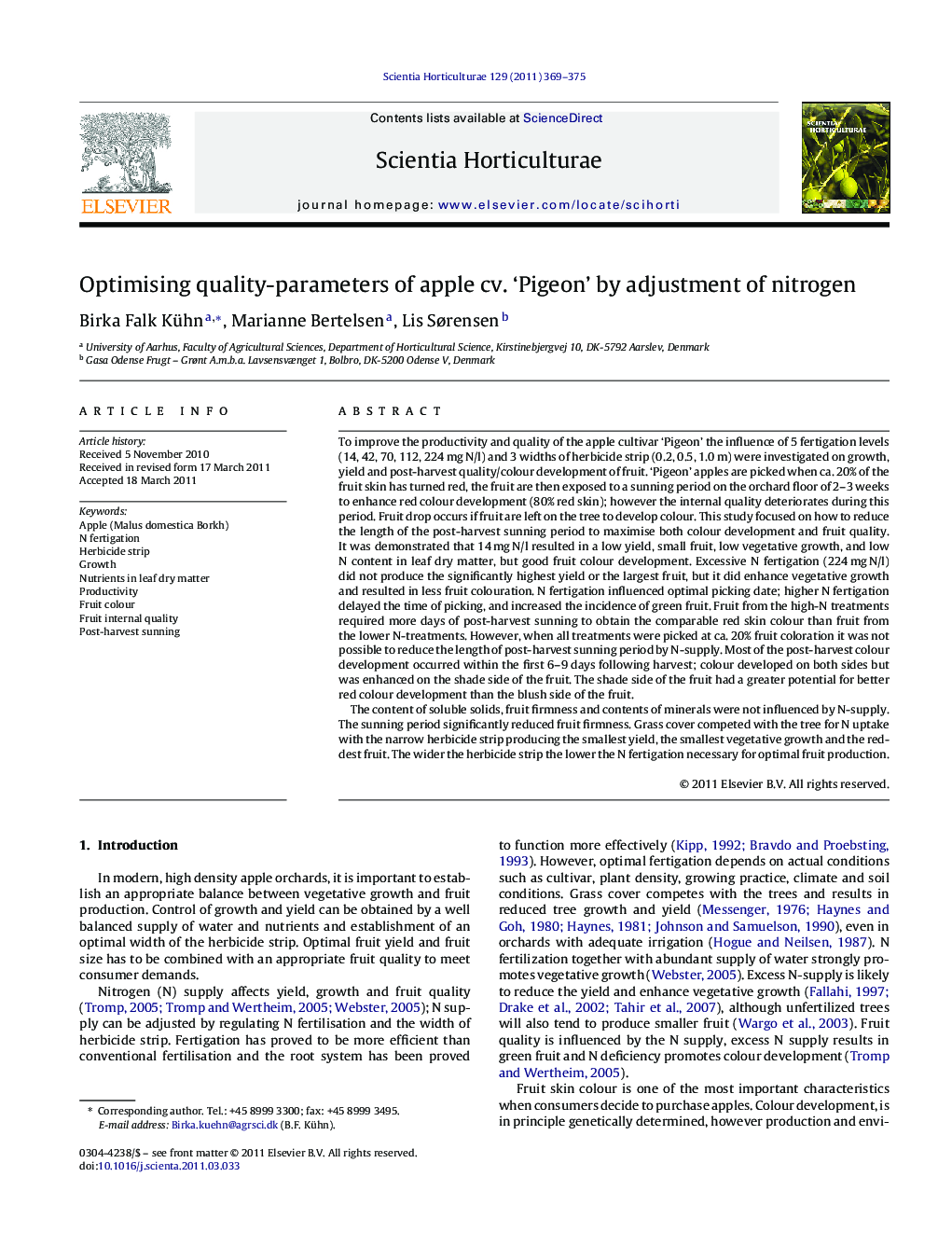| کد مقاله | کد نشریه | سال انتشار | مقاله انگلیسی | نسخه تمام متن |
|---|---|---|---|---|
| 4568305 | 1331294 | 2011 | 7 صفحه PDF | دانلود رایگان |

To improve the productivity and quality of the apple cultivar ‘Pigeon’ the influence of 5 fertigation levels (14, 42, 70, 112, 224 mg N/l) and 3 widths of herbicide strip (0.2, 0.5, 1.0 m) were investigated on growth, yield and post-harvest quality/colour development of fruit. ‘Pigeon’ apples are picked when ca. 20% of the fruit skin has turned red, the fruit are then exposed to a sunning period on the orchard floor of 2–3 weeks to enhance red colour development (80% red skin); however the internal quality deteriorates during this period. Fruit drop occurs if fruit are left on the tree to develop colour. This study focused on how to reduce the length of the post-harvest sunning period to maximise both colour development and fruit quality. It was demonstrated that 14 mg N/l resulted in a low yield, small fruit, low vegetative growth, and low N content in leaf dry matter, but good fruit colour development. Excessive N fertigation (224 mg N/l) did not produce the significantly highest yield or the largest fruit, but it did enhance vegetative growth and resulted in less fruit colouration. N fertigation influenced optimal picking date; higher N fertigation delayed the time of picking, and increased the incidence of green fruit. Fruit from the high-N treatments required more days of post-harvest sunning to obtain the comparable red skin colour than fruit from the lower N-treatments. However, when all treatments were picked at ca. 20% fruit coloration it was not possible to reduce the length of post-harvest sunning period by N-supply. Most of the post-harvest colour development occurred within the first 6–9 days following harvest; colour developed on both sides but was enhanced on the shade side of the fruit. The shade side of the fruit had a greater potential for better red colour development than the blush side of the fruit.The content of soluble solids, fruit firmness and contents of minerals were not influenced by N-supply. The sunning period significantly reduced fruit firmness. Grass cover competed with the tree for N uptake with the narrow herbicide strip producing the smallest yield, the smallest vegetative growth and the reddest fruit. The wider the herbicide strip the lower the N fertigation necessary for optimal fruit production.
► High N-levels resulted in higher production, larger fruits and less red skin coloration.
► Most of the post-harvest colour development occurred within the first 6–9 days following harvest.
► Post-harvest colour development was parallel for different N fertigation levels.
► Fruit from the high-N treatments required more days of post-harvest sunning to obtain the comparable red skin colour.
► The post-harvest sunning period significantly reduced fruit firmness.
Journal: Scientia Horticulturae - Volume 129, Issue 3, 27 June 2011, Pages 369–375